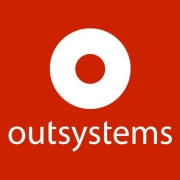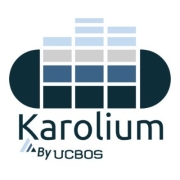Low-Code Development Platforms empower organizations to create applications rapidly by reducing the need for traditional coding. These platforms streamline development processes and enable more accessible software creation.
Low-Code Development Platforms are changing how applications are built by allowing developers to use visual interfaces that bypass extensive coding requirements. They enable fast deployment and customization, responding adeptly to shifting business needs. Embracing low-code technology can result in increased operational efficiency and reduced development costs.
What are the critical features of Low-Code Development Platforms?In sectors like finance and healthcare, Low-Code Development Platforms enable rapid prototyping and deployment of solutions, ensuring compliance with industry regulations. Retailers utilize these platforms to streamline operations and enhance customer interactions through custom apps.
Low-Code Development Platforms facilitate innovation by enabling non-developers to engage in application creation, which broadens participation across teams and fosters quicker adaptation to market changes.
| Product | Market Share (%) |
|---|---|
| Microsoft Power Apps | 13.8% |
| Appian | 9.5% |
| Oracle Application Express (APEX) | 8.8% |
| Other | 67.9% |































































































Savings! Low-code development saves both time and money. The bulk of the work is already done for you. You start with a concept, create your desired flowchart, and the low-code development process takes over from there. Using existing templates, low-code development delivers a usable finished product in minutes, rather than months. There is no longer a need for a team of developers to create code or to maintain processes and security. The hard work is already done and made simple for you.
Low-code development also gives you a great level of control over your business flow concept. You are in the driver’s seat, and can interpret your concept, course-correct, and have greater control over precisely how your workflow will function throughout the entire process. There is no more back-and-forth with a team of developers. It is your design and your process, from start to finish.
The basic answer is control.
Low-code leaves some wiggle room and the opportunity to make adjustments to better suit your desired outcomes. As mentioned above, low-code may potentially require some coding expertise to get your application to satisfy all your chosen outcomes. All of this can still be done in an extremely accelerated time frame, getting you from concept to finished application in minutes as opposed to hours, days, or even months.
No-code, although offering faster options and overall simplicity, does not allow for changes or tweaks to the processes and configurations. In a no-code environment, you will find a selection of predesigned basic templates created to satisfy numerous, general business needs. As no changes are permitted, there is no need for additional coding work to be done. If you are looking for an application that can fit into a basic pre-set template, then no-code may be the right choice for you.
Low-code and BPM are the same but different. BPM, or Business Process Management, is pretty “old school”. BPM is simply managing a business through thought and processes, troubleshooting, idea exchange, etc. Essentially, low-code begins with a finished, fine-tuned BPM and gets to work creating an application to meet your specifications. More and more, you will see the two terms together in combinations such as “low-code BPM.” Low-code works best when coupled with a brilliantly-executed business process.
A low-code development platform is a developmental environment used to create applications through defined pre-set selections rather than extensive time-consuming hand-coding. A low-code development platform offers an array of choices to initialize the framework of your desired application.
Once you have decided that low-code development is right for you, you need to choose a platform. The marketplace for low-code development platforms has a plethora of diverse selections to choose from. To make the right choice and find the best match, you should have a solid understanding of your business needs, desires, and goals. Is your business small, medium, or large? How many users need to have access to the platform? Do you want cloud-based or web-based? Which interfaces are you working with - IOS, Android, Windows, Linux, or all of these? What is your budget? These are just a few of the things to consider when choosing the right platform.
There is a platform that will fit your business needs, and many even offer free trials. It is advantageous to use the free trial period offered to give the platform a test drive and see if it is truly the best fit for you and your organization.
Low-code and no-code development is where tech is now and will be for the foreseeable future. So many applications use the same basic code components, making the need for hand coding somewhat redundant. Low-code / no-code platforms are akin to superhighways offering a direct route to where business wants to go and can get you there easier and faster than ever before, saving you time and money and giving you greater opportunities for growth and success.
Low-Code Development Platforms empower non-technical users to contribute to application development, reducing reliance on IT departments. By simplifying the creation of applications, these platforms streamline workflows and automate repetitive tasks, enabling IT teams to prioritize more critical projects. This democratization of development reduces the overall backlog and accelerates digital transformation efforts.
What are the security concerns with Low-Code Development Platforms?While Low-Code Development Platforms offer efficiency, security is a valid concern. These platforms must provide robust security features, such as data encryption, user authentication, and role-based access control. It's crucial to evaluate the platform's compliance standards and ensure it adheres to industry regulations like GDPR or HIPAA, depending on your business needs. Ensuring your chosen platform has regular security updates and thorough support can mitigate potential risks.
How do Low-Code Platforms integrate with existing systems?Low-Code Platforms are designed with integration in mind. They often come with pre-built connectors and APIs that facilitate seamless integration with existing systems like CRM, ERP, and others. Custom connectors can be developed to ensure better compatibility. These integration capabilities allow new applications to work in harmony with existing business processes, enhancing operational efficiency without requiring extensive redevelopment.
Can Low-Code Platforms support large-scale enterprise applications?Low-Code Platforms have evolved to handle enterprise-level applications, offering scalability and performance capabilities suited for significant workloads. They provide extensive customization options and support for agile development practices, making them suitable for large projects. However, it is critical to assess the platform's capacity to meet your specific performance and scalability requirements before full adoption.
How do Low-Code Platforms enhance collaboration between business and IT teams?Low-Code Platforms promote a collaborative environment by enabling business users to participate actively in application development. These platforms eliminate technical barriers, allowing stakeholders to contribute ideas and test functionalities easily. This collaboration ensures that applications align more closely with business objectives and user expectations, ultimately leading to higher satisfaction and productivity.